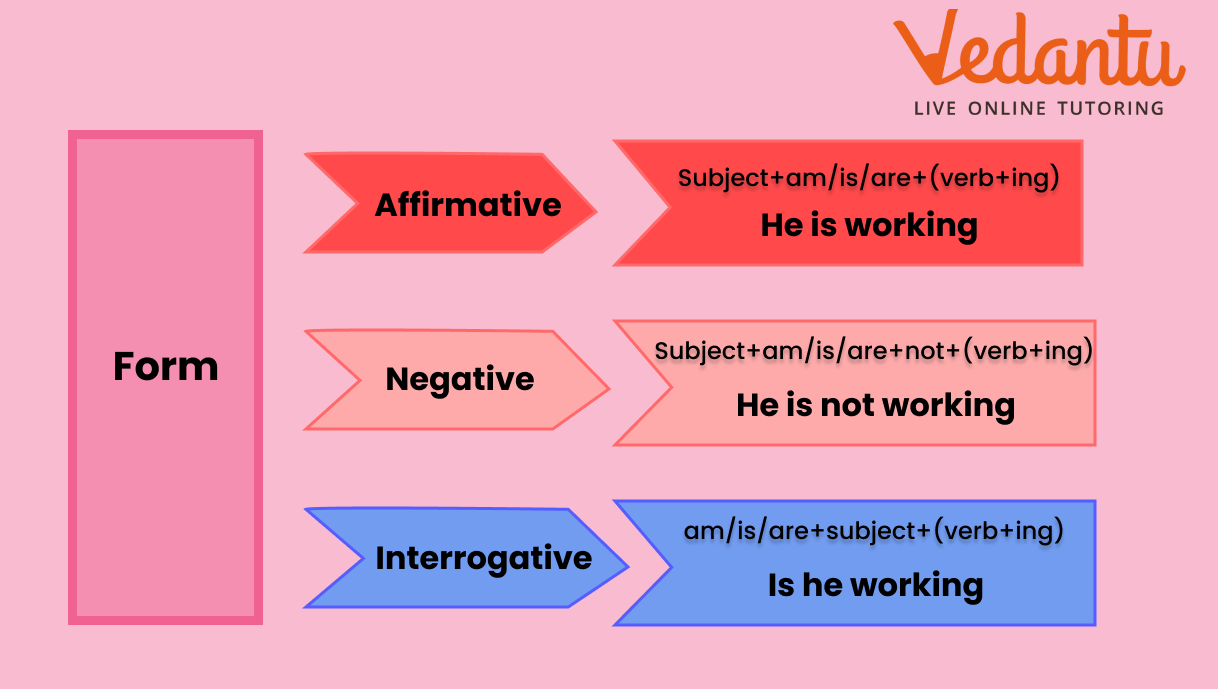




Present Continuous Tense: Overview, Definition, Formula, Applications, and Examples
FAQs on Present Continuous Tense: How to Use and Form Present Continuous Tense
1. What is the Present Continuous Tense?
The Present Continuous Tense describes actions that are happening right now or are ongoing. For example, "I am eating dinner."
2. How do you form the Present Continuous Tense?
You form it using the verb 'to be' (am, is, are) followed by a verb ending in -ing. For example, "She is reading."
3. When do we use the Present Continuous Tense?
We use it for actions happening now, temporary activities, future plans, and trends. For example, "He is studying," or "We are going to the park tomorrow."
4. Can the Present Continuous Tense be used for future events?
Yes, it can describe future plans or arrangements. For example, "I am meeting my friend later."
5. How do you make a negative sentence in the Present Continuous Tense?
You add 'not' after the verb 'to be.' For example, "She is not sleeping."
6. How do you ask questions in the Present Continuous Tense?
You put the verb 'to be' at the beginning of the sentence, followed by the subject and the verb ending in -ing. For example, "Are you coming?"
7. Can the Present Continuous Tense describe repeated actions?
Yes, it can describe actions that happen repeatedly, often with words like 'always' or 'constantly.' For example, "He is always talking."
8. What’s the difference between the Present Simple and Present Continuous Tense?
The Present Simple describes regular actions or facts, while the Present Continuous describes actions happening right now or temporary actions. For example, "She walks to school" (Present Simple) vs. "She is walking to school" (Present Continuous).
9. How do you use the Present Continuous Tense to show annoyance?
You use it with words like 'always' to show annoyance with repeated actions. For example, "He is always forgetting his keys."
10. Can the Present Continuous Tense be used to describe trends?
Yes, it can describe current trends or changes. For example, "People are using smartphones more and more."
11. Can the Present Continuous Tense describe simultaneous actions?
Yes, it can describe two actions happening at the same time. For example, "I am reading a book while he is cooking dinner."
12. How do you describe temporary situations with the Present Continuous Tense?
Use it to show that a situation is temporary. For example, "I am living with my parents until I find a new apartment."
13. How is the Present Continuous Tense used in storytelling?
It sets the scene by describing what characters are doing. For example, "As the story begins, the hero is traveling through the forest."
























